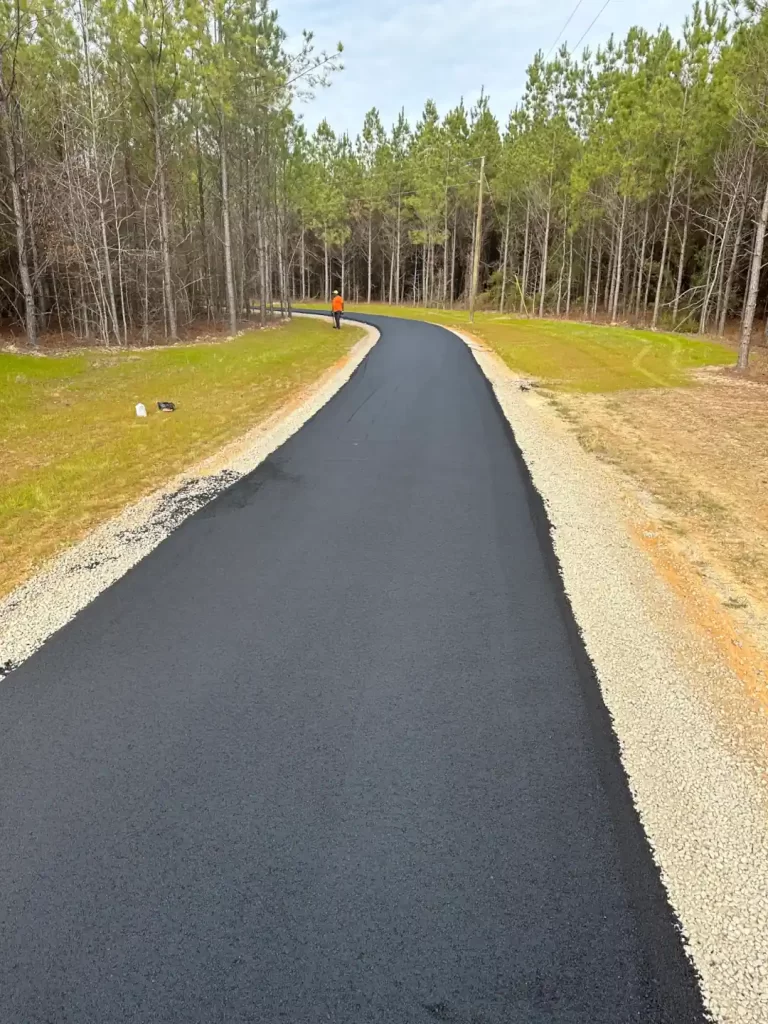Pulling into a business, what’s one of the first things you notice?
The parking lot.
Whether it’s smooth and freshly striped or cracked and crumbling, a parking lot sends a message. For commercial properties, retail centers, and office buildings, a well-maintained asphalt parking lot plays a key role in safety, appearance, and even customer trust.
But how long should an asphalt parking lot last before it needs major work?
The short answer: an asphalt parking lot typically lasts between 15 and 25 years. The long answer depends on several important factors—many of which are within your control.
In this guide, we’ll break down what determines the lifespan of your asphalt lot, how to maintain it, and when to resurface or replace it.
The Typical Lifespan of an Asphalt Parking Lot
Under ideal conditions, a professionally installed asphalt parking lot can last 20 to 25 years. However, most commercial properties see wear and tear from traffic, weather, and time.
On average, expect a lifespan of 15 to 20 years, especially if regular maintenance is performed.
The good news? With the right care, you can extend your lot’s lifespan significantly and delay the need for full replacement.
What Impacts Asphalt Parking Lot Longevity?
Not all parking lots age the same way. The following factors will greatly affect how long your pavement holds up.
Installation Quality
A strong foundation is critical. Parking lots built with proper grading, base compaction, and asphalt thickness will resist cracking and water damage for years.
If corners were cut during installation—like a thin asphalt layer or poor drainage—you’ll likely see problems much sooner.
Traffic Volume and Weight
Heavy use from delivery trucks, garbage trucks, and high daily traffic takes a toll over time. The more pressure on your lot, the more essential it is to reinforce base layers and plan for regular resurfacing.
Climate and Weather
Freeze-thaw cycles, UV exposure, heavy rain, and snowplowing can all reduce the lifespan of asphalt. Areas with extreme seasonal weather will see faster deterioration without regular upkeep.
Drainage and Water Control
Standing water is one of asphalt’s worst enemies. Poor drainage allows water to seep into cracks and weaken the sub-base, leading to potholes and structural failure.
Maintenance Habits
Neglecting small repairs allows minor cracks and fading to turn into costly damage. On the other hand, proactive maintenance can add 5 to 10 years to the life of your parking lot.
How to Extend the Life of Your Asphalt Parking Lot
Investing in maintenance now can save you thousands later. Here are key strategies to help your parking lot reach its full potential.
Perform Routine Inspections
Walk your lot regularly and look for early signs of trouble:
- Small cracks or surface bubbling
- Faded striping
- Pooling water
- Minor depressions
Catching these issues early keeps them from turning into major repairs.
Sealcoat Every 2 to 3 Years
Sealcoating adds a protective layer that shields asphalt from water, UV rays, and chemical spills. This inexpensive treatment preserves color and slows oxidation.
Repair Cracks Promptly
Even small cracks allow moisture into the pavement. Left untreated, they expand and erode the base layer. Crack sealing should be part of your annual upkeep.
Clean and Sweep Regularly
Debris, trash, oil leaks, and standing water can degrade your surface over time. Keeping the lot clean also prevents stains and improves appearance.
Re-Stripe and Repaint
Faded lines not only look unprofessional—they can also cause traffic issues and liability risks. Restriping every 1–2 years maintains safe navigation and ADA compliance.
When to Resurface or Replace Your Parking Lot
There comes a time when patching and sealing aren’t enough. Knowing when to resurface or fully replace your asphalt is crucial.
Consider Resurfacing If:
- The base layer is still in good shape
- Cracks and potholes are limited to the surface
- The lot is over 10 years old and has never been resurfaced
Resurfacing involves applying a new layer of asphalt over the existing structure, giving it a fresh look and added strength.
Consider Replacement If:
- There are widespread deep cracks and potholes
- Drainage problems are recurring
- The surface feels soft or uneven when walked or driven on
- Your parking lot is 20+ years old and has had multiple resurfacing attempts
Full replacement is more expensive but often more cost-effective long-term if structural issues exist.
Signs Your Asphalt Parking Lot May Be Failing
Watch for these common signs that your asphalt may need more than routine maintenance:
- Potholes that keep returning after patching
- Cracks wider than one-quarter inch
- Sagging or soft spots
- Water pooling in multiple areas
- Asphalt fading from black to gray with brittleness
If these issues are showing up in your lot, it may be time to schedule a professional assessment.
Partner with a Trusted Local Paving Contractor
Your parking lot is one of the first things customers, tenants, or clients see when they arrive. A smooth, well-maintained surface sends a message of professionalism and care.
Whether your lot needs a simple repair, full resurfacing, or replacement, we’re here to help. Our team specializes in commercial parking lot paving with long-lasting results, expert guidance, and responsive service.
Reach out today to schedule a free site evaluation. Let’s build a parking lot that’s safe, durable, and ready for the long haul.
